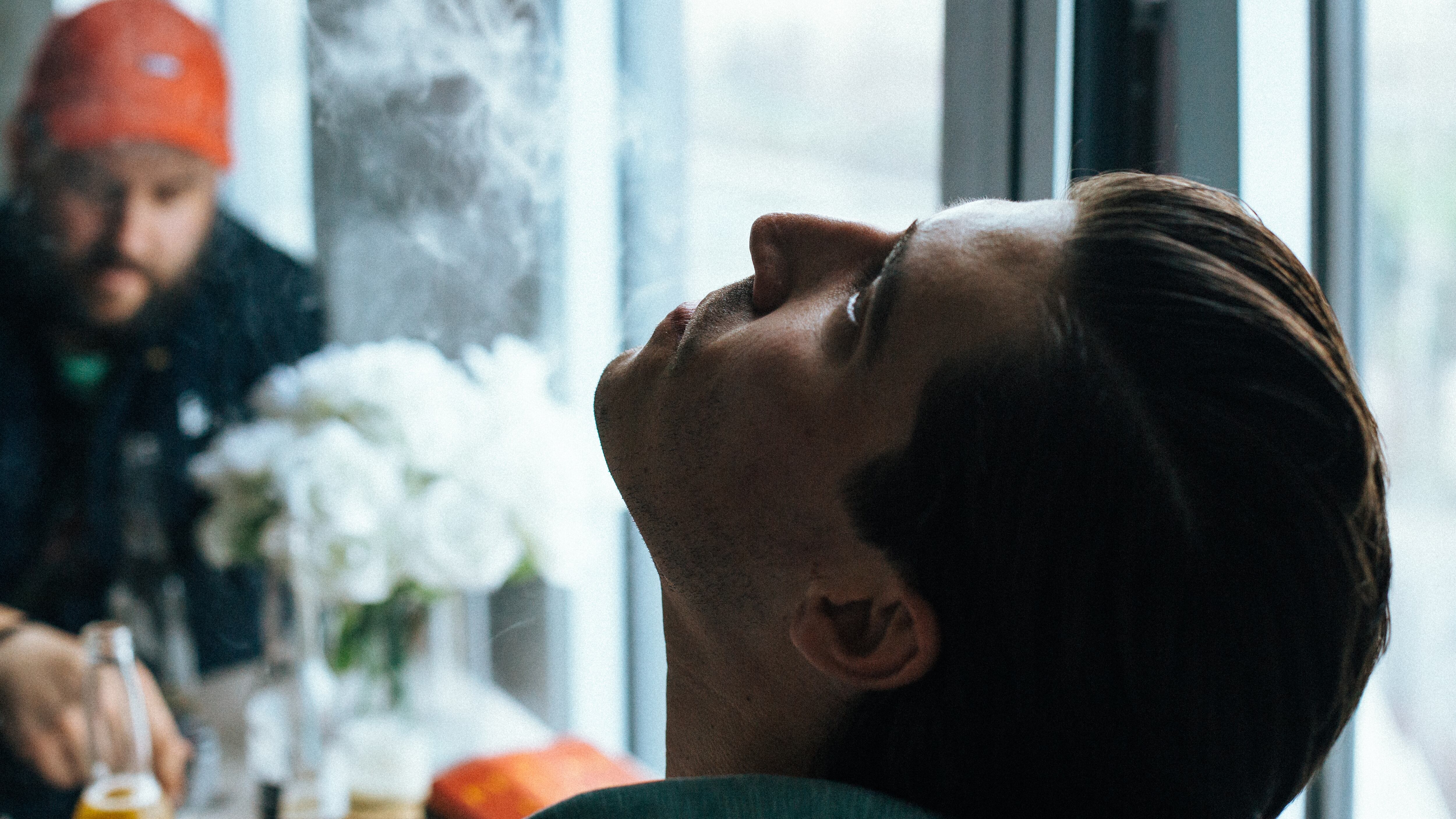In cannabis, there are no dumb questions.
After all, this is a relatively new industry that's just beginning to emerge from decades of prohibition—many of the answers aren't even known yet. Still, it's easy for newcomers to get intimidated by what they think they're supposed to know when it comes to buying and consuming weed.
On this 420, of all 420s, no one should feel left out. So we went to two cannabis experts—Brandie Bee, founder of theelevatedadvocate.com, and Anna Symonds, director of education at East Fork Cultivars—to answer some of the basic questions freshman stoners might have when wading into the world of pot.
What questions should I be asking when I go into a dispensary?
Brandie Bee: Not all dispensaries are created equal. Some will have higher-quality products and more knowledgeable staff than others. When choosing which shop to frequent, be sure they are able to answer these questions without too much trouble: What can you tell me about this farm? Was this flower grown organically? When was this flower harvested? What effects can I expect from this strain? Is it a more energetic or mellow high? What is the CBD-THC ratio? Was this flower terpene tested, and can I see the profile? If they seem enthusiastic and confident in their answers, then you know you're in good hands.
Be honest: Do different strains really have all the effects budtenders say they do?
Anna Symonds: Not necessarily—maybe for that person and for some others. But personal experiences with the same flower can vary wildly according to individual genetics, biology, and metabolism.
Bee: It's important to note that you can smoke a piece of the very same nug in the morning and again in the evening and have two totally different experiences depending on your day, your mood, and a variety of other factors. So advice based on someone else's experience is never going to be altogether useful. However, cannabis strains do have their own unique combination of cannabinoids and terpene compounds. If you know enough about these compounds and how they work together, you can predict the overall experience based on the ratios found in that strain. So a knowledgeable-enough budtender can give you a pretty good idea of what to expect, but it's not likely to be on the nose.
For a consumer, does it really matter how a flower is grown, i.e., indoor versus outdoor?
Bee: All of the warm, fuzzy effects of cannabis come courtesy of cannabinoids and terpenes. These compounds are found inside the trichome formations of the cannabis flower. Therefore, whether the plant was grown indoors or outdoors doesn't matter as much as the number and health of the plant's trichome formations. While indoor grows do allow the cultivator more control of the environment, outdoor plants are every bit as capable of being just as potent. So a plant's potency and quality have way more to do with the overall skill of the cultivator than where it was grown.
Symonds: Outdoor-grown flower has a vastly lower carbon footprint and requires far fewer inputs. It also gets the benefit of a natural environment that stimulates the plant to produce full and novel expressions of its genetic potential. Short answer: If you care about the environment at all and/or are interested in the natural spirit of the plant, look for outdoor.
Is spending money on an expensive pipe, bong or other smoking apparatus a worthwhile investment?
Bee: Yes, but only if you're smart about it. Put your wallet away if you're scoping out pieces based on style rather than substance. Safety should be your No. 1 buying factor. If you're shopping for consumption devices, look for a piece that allows the smoke to cool before it reaches your lips—think long-stem pipes, multichamber bongs, etc. And these shouldn't break the bank. This is good because if you enjoy extracts, you will want to invest those savings into a decent electric dab rig. Look for one that allows for low-temp control to protect your terpenes and your lungs. As a bonus, they also reduce the risks associated with butane torches.
What is the functional difference between smoking a pre-roll versus, say, from a pipe?
Symonds: Joints are my favorite way to smoke cannabis because I strongly believe they taste the best. I did read that a joint essentially acts as its own filter because you're pulling the smoke through all of the plant material before it reaches your mouth, which would explain why it tastes better to me. Functionally speaking, joints are less "efficient" in that there's more smoke "lost" than with some other methods. I think this is a pretty minor effect, though, and definitely not a concern for me. It comes into play more when researchers try to calculate the amount of THC someone has consumed from a joint.
Is vaping safe again?
Symonds: Short answer: Vaping mediocre products never was safe, and vaping products with stringent standards is as safe as it always was. There are a small minority of painstaking craft manufacturers, such as Heylo Cannabis, who do things right, from their extraction processes to their extra testing to the integrity of their hardware. In the hands of exceptional companies like that, vaping is relatively safe and always has been. To minimize your risk of harming yourself, only ever vape 100% cannabis oil—no additives, no distillate, no isolates.
How much THC is too much THC?
Symonds: "Minimum effective dose" is wildly personal, with a strong genetic basis and also a tolerance element. But generally speaking, too much THC is a level that either starts to create unwanted side effects, such as paranoia, sedation, anxiety, and/or rapid heartbeat, or oversaturates endocannabinoid receptors so that they "downregulate," meaning they get less sensitive and produce less of their own crucial chemical messengers. For people who consume every day, taking regular tolerance breaks can help prevent this.
If I get too high, is there anything I can do to come down?
Bee: Here is a great routine to follow. Step one: Find a more comfortable environment. Sometimes a change of vibe is all it takes to snap out of it. Step two: Drink plenty of water. It's amazing how much better you will feel when you're hydrated. Step three: Chew on some black peppercorns. Black pepper contains the terpene beta-caryophyllene. This terpene effectively pulls a kind of lever to increase the sedating effects rather than the psychological effects of THC.
Is there any method to gradually build my tolerance if I'm starting from scratch?
Bee: As with all things cannabis, the trick is to start low and go slow. The best way to gradually build your tolerance if you're starting from scratch would be to start with CBD and work your way up to a 3-to-1 CBD-THC flower. From here you can slowly increase to a 2-to-1, 1-to-1, and eventually a low-potency THC flower with no CBD at all.
I got a shot of CBD in my espresso once and didn't feel a thing. Is CBD a scam?
Symonds: It's only a scam if it's a shitty product, though there are plenty of them out there. Quality full-spectrum CBD extract has physiological effects and benefits in the body, whether you feel them or not.
Bee: Unlike THC, CBD is non-intoxicating. This means that unless there is THC present, you will not feel any of the effects commonly associated with cannabis. So not getting high is not, in and of itself, evidence that the CBD was a scam. That being said, there is certainly bunk CBD out there, so make it a point to do your research and only buy CBD from reputable dispensaries and request a lab report for good measure.
I see so many weird THC- and CBD-infused products out there, like bath bombs and stuff. How do I know what's legit or not?
Bee: While topical THC and CBD is thought to be effective for localized aches and pains, it doesn't work quite the same way as smoking or eating an edible. Unless the product makes direct contact with your mucous membranes, it is not likely to make you feel lifted. But it will nourish your skin, reduce inflammation, and generally help you relax. Just be sure you look for a high-quality product from a trusted brand. For best results, be sure to purchase topical products at a dispensary where their claims are always going to be backed up by a lab report.
Symonds: If you enjoy something and feel it's worth the money, that's personal preference. Bath bombs can be pleasant. But as far as therapeutic benefits, you'll get the most from something that acts systemically in your body—something you ingest. If you want to use cannabis as medicine, the best way to get it is not from a CBD burger, candy or other gimmicky item with lots of other unnecessary inflammatory components. Look for simple, pure, therapeutically formulated products that you can take on a regular schedule. Avoid sugar, artificial flavorings and colorings, preservatives, and other additives.
How do I know if I'm ready to try dabbing?
Bee: It's next to impossible to answer this question because it's going to be different for everybody. What I can say is that you can always start with a very small, low-temp CBD dab and slowly work your way up in size and potency as you develop a tolerance and get more comfortable around a dab rig. Remember, it's always best to start low and go slow.
Symonds: You're not ready, and don't worry—you never need to be. (Another unpopular but factual opinion!) Unless you have a major chronic illness or terminal disease, you don't need this level of potency and you're likely overstimulating your endocannabinoid receptors.
Where should I be storing my weed ideally? Does it ever "expire"?
Bee: There are mixed ideas here, but I prefer to keep my cannabis in an opaque airtight container made of glass and store it in a cool, dark place for up to a year before I consider tossing it. While cannabis does not exactly go bad or spoil, it can lose its potency. This is because THC converts to another compound, CBN, with time. There's nothing wrong with this compound really, but it's certainly not THC and it does tend to make you feel more drowsy. So consider puffing on your vintage stash closer to bedtime.
Symonds: If stored well, cannabis can last a good year. Don't put it in the freezer. Some people argue that the fridge is an ideal place, while others say that the fluctuations in humidity due to frequent opening and closing cause strife to the flower. Kind of depends on how quickly you're going to use it or not.
Can my work test me for weed, and can they fire me for it?
Symonds: Probably. Generally speaking, unless you have a contract that explicitly says otherwise, employment in Oregon is "at will"—they can fire you for any reason or no reason. That said, patients in some states have seen success in the courts at establishing their employment rights to use cannabis medicine.
How do I know if an edible is going to totally mess me up?
Symonds: Silly rabbit, that's in your control! You don't have to eat the whole thing—start low and go slow. If you're brand new to cannabis, don't eat more than 2 mg of THC to start. Pay attention to the ratio—sometimes 1-to-1 ratios of CBD and THC can be even more potent than just THC alone. But having CBD in the mix is also more likely to result in a more balanced experience, i.e., less chance of "dysphoria," the opposite of euphoria.
See more of WW's First-Timer's Guide to 420 here!

